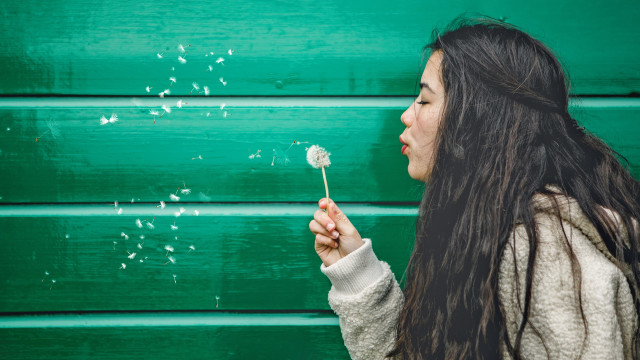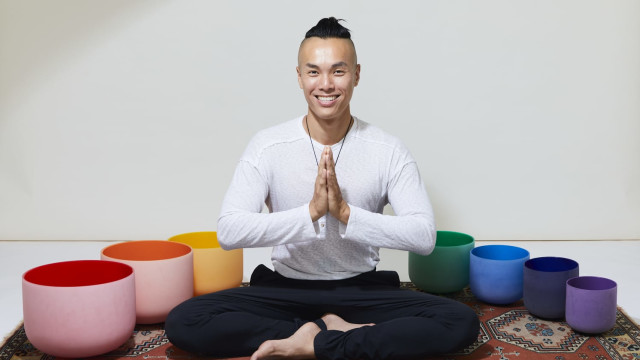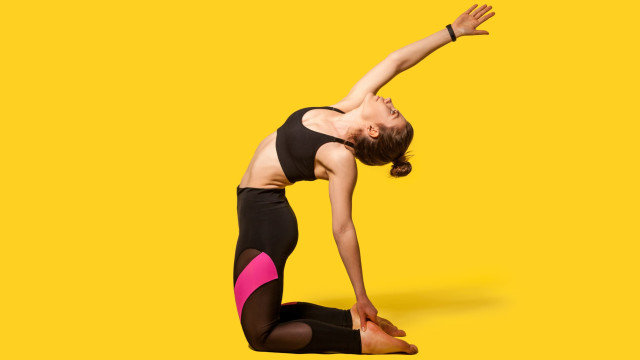Get Comfortable with Stillness

Tuning in to your inner world brings all that’s going on in your brain and body to the forefront. The stories you’ve told yourself, narratives you’ve absorbed, worries, past pain, fears, hopes, and ambitions suddenly get louder in the absence of distractions. It’s no wonder the idea of sitting in stillness can sometimes feel overwhelming.
But taking time to mindfully explore your internal universe is not just necessary, it’s liberating, says Roundglass meditation teacher Grace Edmunds, who learned to detach from her thoughts and enjoy her own company by sitting still with personal discomfort.
And there’s science to explain why: Our thoughts and emotions are often colored by our past and concerns of the future, so taking time to sit mindfully can help you perceive the present moment more clearly.
Connecting with an anchor like breath or movement has a calming effect on the nervous system that makes strong emotions and mind chatter feel less threatening. This creates space to objectively face challenges without following negative tangents that distract from understanding your behavior or make it too scary to process past pain, without overidentifying with your inner dialogue.
Ease your way into being comfortable with stillness by sitting with small moments of discomfort. Set a timer for 30 seconds, and as you begin to tune into the quality of your breath, reconnect with it as a reminder to witness any challenging thoughts and emotions that will come up.
And contrary to popular belief, sitting in stillness isn’t siloed to meditating in a quiet room —you can also connect with that expansive sense of tranquility in motion. See how these practices can help to get you started.
Find Stillness in Movement
Movement is one way to learn how to be in the eye of the storm: objectively experiencing the mind and body without getting swept up or carried away.
Yoga is great for this but doing any exercise that keeps your mind in touch with body movements can push you closer to experiencing what Edmunds calls a spacious and quiet experience of stillness. From here, you’re better able to see things for what they are, without following negative thoughts or memories that come up in response to physical sensations.
When the inner dialogue begins to take over, come back into the present moment by reconnecting with your breath and body; think of it like your grounding point in the swirl of movement.
Try this course, Whirling: A Sacred Dance for Deep Healing, by Roundglass sacred dance teacher Zia Nath, to experience the effects of finding stillness in movement on your overall wellbeing.
Harnessing the ability to redirect your attention to breath or physical sensations, regardless of what comes up, as you dance, walk — however you move your body — is one way to practice noticing and releasing challenging emotions and destructive thoughts, so they don’t influence your relationships or responsibilities, Edmunds says.
Tips for Coping with Stillness When It’s Scary
1. Try Sukasana or Savasana Pose
Sukasana (Easy Pose) and Savasana (Corpse Pose) are two beginner friendly yoga poses you can do to familiarize yourself with the experience of stillness. Both are normally practiced at the beginning or end of a yoga class. These poses help you observe thoughts and feelings while staying connected to the flow of breath.
To get into Sukasana pose, take a seat on a comfortable surface, cross your legs, and close your eyes. Take a deep breath in as you lengthen your back, drop your shoulders, and straighten your neck. Relax into this upright position with your exhale.
For Savasana, lie down on your back and as you inhale, expand your arms and legs out like a snow angel, relax into this shape with your exhale, making sure to drop your shoulders. Keep your eyes closed as you breathe in and out.
When practicing Sukasana and Savasana, open your eyes whenever you start feeling overwhelmed by a challenging emotion in response to a triggering memory. It’s easy to get lost in the intensity of your feelings when your eyes are closed, but reopening them and noticing sights, smells, or something you love can help neutralize challenging emotions, while grounding you as you have something else to focus on, rather than your inner dialogue.
2. Connect with a Sense of Purpose
If you start feeling restless, do something nourishing like preparing a cup of tea, or calling a friend. These activities can help you reconnect with a sense of control, says Edmunds.
This is especially important if you’re trying to work through a traumatic experience, and don’t have access to a trained professional. Trauma is complex, and we normally don’t process it as we’re living through it. Facing it again after the fact can cause further harm when left unprocessed.
Consider working with a trauma and mindfulness-informed therapist if you sense you need to heal immense emotional pain. Professionals like Valerie Vimalasara Mason-John can provide support in helping you navigate facing your feelings.
3. Study Your Physical Sensations
Sitting and really noticing what happens in your mind and body when you get still can shed light on moments of ease and beauty regardless of how fleeting they may be. Experience the smell and ambiance of a lit candle or attune to relaxing music in the background. Acabchuk says relishing the moment may help to ease fear or worry related to the practice — and stillness starts to become an opportunity to put down all the weight you typically carry.
Take Baby Steps When Exploring Stillness
As you explore your relationship to stillness, remember that most of us are avoidant when it comes to sitting with our mind. In fact, one study published in “Science” found many people — especially men — would rather press a button and receive a mild electric shock, than spend up to 15 minutes alone in a room with their thoughts.
Plus, you’ve lived your whole life practicing the opposite of stillness. The modern world offers constant simulations that train our brains to crave instant gratification, while normalizing the ability to ingest a lot of new, bite-sized information — fast, says Acabchuk.
Over time, you’ll learn to detach from the stories in your mind, and experience a deep sense of freedom that can come from objectively understanding how you relate to the world and loving it anyway: “It’s less ‘that [emotion or thought] is me’, and more ‘this emotion is experiencing itself through me,’” says Edmunds.
We have a library of exercises intended to strengthen your meditation and mindfulness practice. Download the Roundglass app to find what's right for you.
Key Takeaways:
- See how moving your body can stop you from overidentifying with challenging thoughts.
- Be patient with yourself as you get used to sitting with and experiencing your body and mind.










